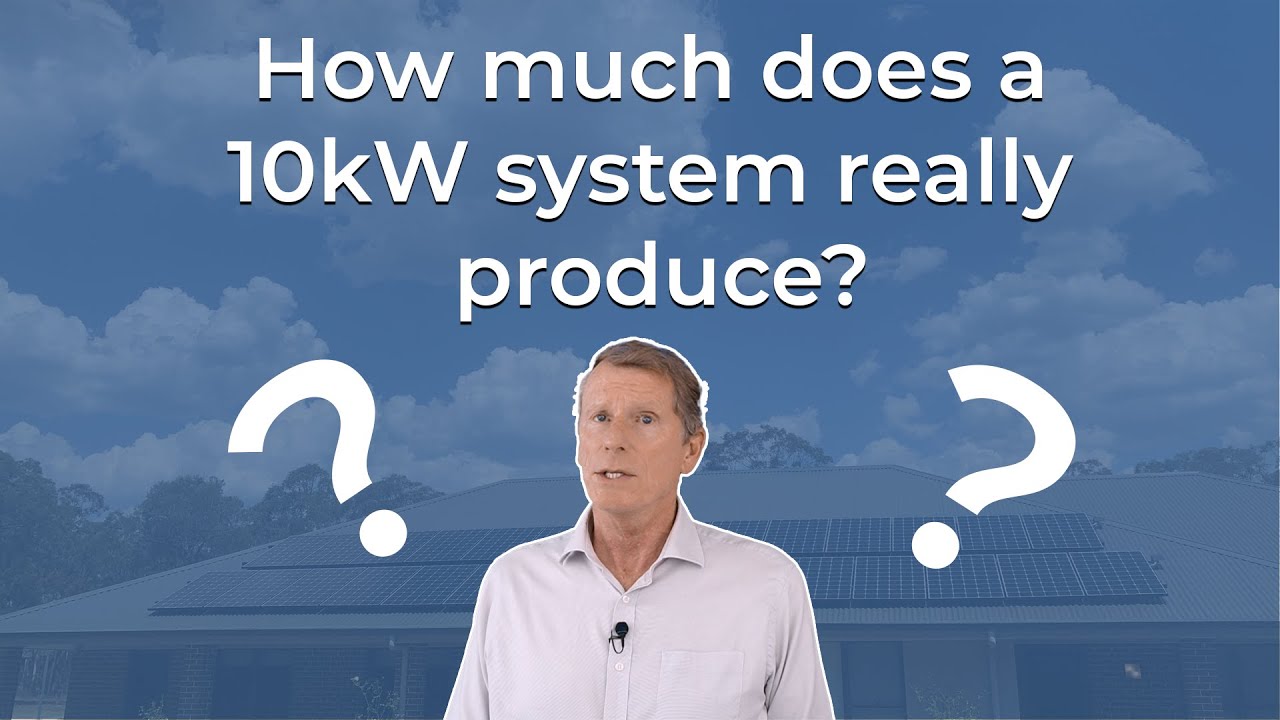Here you can find Solar Panels and technological accessories related to Solar Energy: Click Here If you want to learn about Solar...

Here you can find Solar Panels and technological accessories related to Solar Energy: Click Here
If you want to learn about Solar Panels, to advise you before buying or to build your own Solar Panel: Click Here
so a 10 kilowatt solar power system gives you 10 kilowatts of power right well not really [Music] so how does this work well in this video we're going to look at some of the misconceptions about how a solar system is sized and what that means to do this we're going to look at four subjects one is what's the difference between a kilowatt and a kilowatt hour and that is also the difference between power and energy secondly how is the size of the solar power system calculated thirdly what does solar system produce and fourthly how do you work out the benefits for you so what's the difference between a kilowatt and a kilowatt hour well a kilowatt is power so when you turn on an appliance at home like an air conditioner or a toaster it will use a certain amount of kilowatts at a certain point in time a kilowatt hour is how many kilowatts are used over the course of one hour so that's the difference between power and energy now why is this important well it's important because when you buy your electricity from your retailer you're actually buying kilowatt hours so it's important you understand what a kilowatt hour is versus a kilowatt so how is the size of a solar system calculated well if you have a look at one of these panels each of these panels has a wattage rating so the one we're showing you here is a 425 watt panel so therefore 10 of them has a rating of 4.25 kilowatts and 24 of them would have a rating of 10.2 kilowatts and so on but that doesn't mean they will output that amount of power at any given point in time because that rating is done in a factory in what I'll call a perfect environment which is 25 degrees Celsius with a fixed amount of light now it's rarely 25 degrees Celsius and it's rarely going to have that fixed amount of light when it's up on your roof and then we have other things like some losses through the cables how far they are away from your meter box etc etc but the reason this number is important is because everyone in the industry is therefore able to use the same number at the same starting point so what does the solar system produce well let's stick with the 10 kilowatt system for the moment because it's a round number so a 10 kilowatt system as I said before will rarely output 10 kilowatts in some instances it may even be more than 10 kilowatts but because you buy your electricity as energy in other words in kilowatt hours we measure the output of the solar system in kilowatt hours which is really important the power at any given point in time is not quite as important as how many kilowatt hours you get over the course of a day a month a year or the system's lifetime so a 10 kilowatt system using guidance numbers from the clean energy Council will produce around 35 to 40 kilowatt hours per day on average across a year depending on where you live now it's going to be more than that in summer and it's going to be less than that in Winter more on a sunny day Less on a cloudy day and so on and on a partly cloudy day of course the output goes up and down with the sunshine so the 10 kilowatt system will give you about 35 to 40 kilowatt hours per day on average so how do you calculate the benefit that you'll get from that well using an output of 40 kilowatt hours per day on average across the year we'll take that 40 kilowatt hours and multiply that by 365. so a standard 10 kilowatt system should deliver around 14 600 kilowatt hours of energy over the course of an average year and it really is a simple matter of if you use all of that at the time it's generated which you're unlikely to do then you would save 14 600 times the amount you're paying for energy so if you're paying 30 cents per kilowatt hour you're going to save about four thousand four hundred dollars per year if it's 40 cents it's around five thousand eight hundred and fifty dollars per year now if you don't use any of it for example if you close up your house and go away for a year and turn everything off then you will export all of the power to the grid and you'd multiply that 14 600 by what you get for your feed-in tariff now if that's five cents per kilowatt hour you'd get around 750 per year now the reality is no one is going to use all of the solar power at the time it's generated nor are they going to export all of their solar power so you will be somewhere in the middle and it's simply a matter of working out on average where you're likely to be and that's how you work out the benefit it's also one of the things we take into account when we help you size your solar system now if you need help in finding the right size system for your roof either head to our website which you can find in the description below or by calling the number on the screen and requesting a callback from one of our experts thanks and we'll see you all soon [Music] ...



No hay comentarios